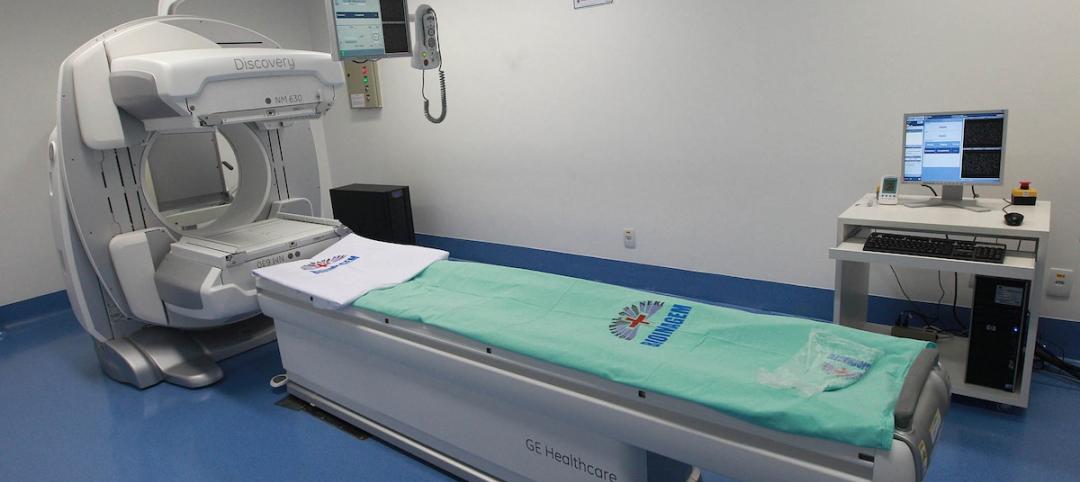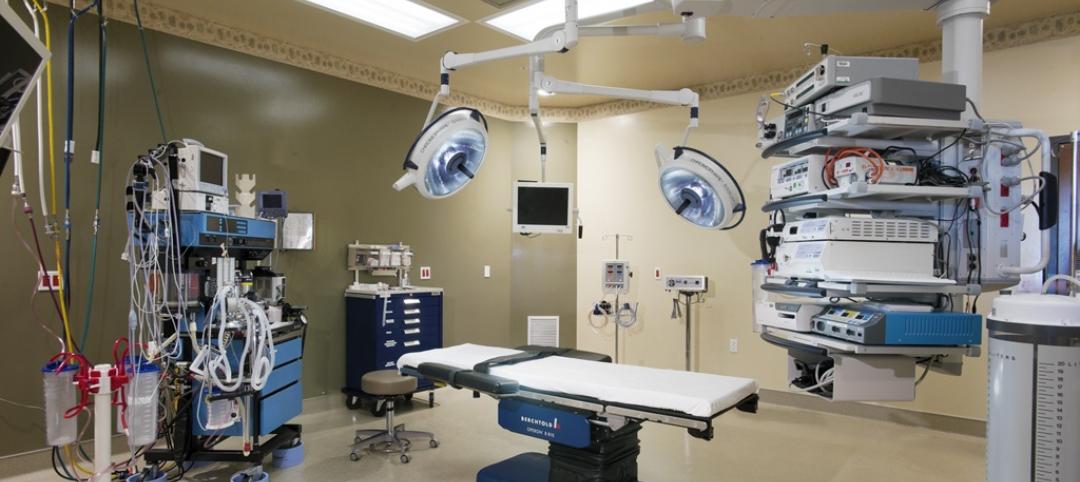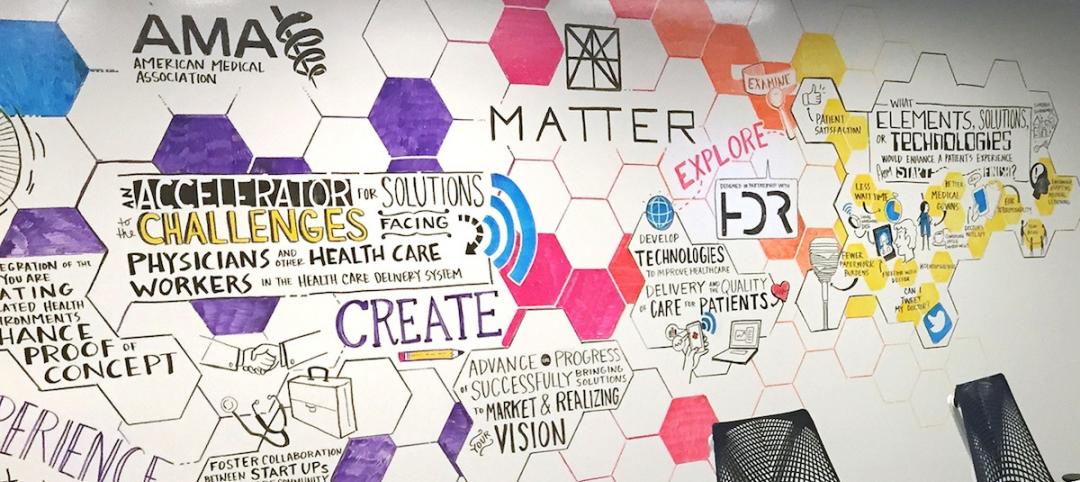Shortly before Mental Health Awareness Month in May, development and construction firm Skanska announced the topping out of California’s first behavioral health facility—and the largest in the nation—to target net zero energy. Located in Redwood City, San Mateo County, Calif., the 77,610-sf Cordilleras Health System Replacement Project is slated for completion in late 2024.
The campus will comprise four single-story mental health rehabilitation centers, each accommodating 16 clients, as well as a three-story co-housing building for 57 residents. With CannonDesign as the design architect, the buildings are arrayed around a central open space with sheltered outdoor seating, community gardens, and recreation areas. Cordilleras also will provide administration, medical, dining, and maintenance services, plus other staff and visitor services.
The project will generate onsite power by installing solar panels on the buildings’ roofs and the parking areas, offsetting the energy usage onsite. Through a design and modeling process, the project team was able to minimize the site’s power usage while maintaining occupant comfort. Cordilleras is targeting a Silver LEED certification and has the potential to achieve Gold.
Located on a wooded hillside south of San Francisco, Cordilleras preserves the existing natural environment and features biophilic design to support therapeutic healing. As a resilient facility, Cordilleras will be able to continue operations in the event of a natural catastrophe.
“More than 51 million Americans—approximately one in five adults—live with mental illness. As healthcare builders and designers, we can directly combat the stigma around seeking care in what was traditionally seen as cold, sterile treatment environments, as we expect to see increased demand for behavioral health facilities,” Lindsay Corotis, vice president/account manager, Skanska USA Building, said in a statement.
The original facility was constructed as a tuberculosis hospital in 1952 and adapted for behavioral health in 1978.
On the Building Team:
Owner: San Mateo County
Design architect and architect of record: CannonDesign
MEP engineer: CannonDesign
Structural engineer: KPFF
Construction: Skanska USA Building



Related Stories
Healthcare Facilities | Apr 8, 2015
Designing for behavioral health: Balancing privacy and safety
Gensler's Jamie Huffcut discusses mental health in the U.S. and how design can affect behavioral health.
Building Team Awards | Apr 5, 2015
‘Project first’ philosophy shows team’s commitment to a true IPD on the San Carlos Center
Skanska and NBBJ join forces with Sutter Health on a medical center project where all three parties share the risk.
Healthcare Facilities | Mar 31, 2015
BIM and the changing procurement model for medical equipment in healthcare construction
BIM coordination has dramatically reduced change orders during the construction period. Unfortunately, it has had the opposite effect on medical technology integration, writes CBRE Healthcare's Julie Ford.
Healthcare Facilities | Mar 28, 2015
VA construction program ‘a disaster,’ says congressman
The VA construction program took more hits recently after the chairman of a congressional Committee on Veterans’ Affairs called an Aurora, Colo., hospital project “a disaster,” and a key VA official resigned abruptly.
Healthcare Facilities | Mar 23, 2015
Can advanced elevator technology take vertical hospitals to the next level?
VOA's Douglas King recalls the Odyssey project and ponders vertical transportation in high-rise healthcare design.
Healthcare Facilities | Mar 22, 2015
New Joplin, Mo., hospital built to tornado-resistant standards
The new hospital features a window and frame system that can protect patients from winds of up to 250 mph.
Healthcare Facilities | Mar 19, 2015
Grumman/Butkus Associates releases 2014 hospital energy and water benchmarking survey results
The survey results show that hospitals’ overall fossil fuel use has trended downward, but electricity use isn’t declining much.
Healthcare Facilities | Mar 18, 2015
Healthcare design partnership asks: What about the doctor?
HDR's Abbie Clary discusses the design of healthcare facilities and how they affect doctors.
Healthcare Facilities | Mar 16, 2015
Healthcare planning in a post-ACA world: 3 strategies for success
Healthcare providers are seeking direction on how to plan for a value-based world while still very much operating in a volume-based market. CBRE Healthcare's Curtis Skolnick offers helpful strategies.
Retail Centers | Mar 10, 2015
Retrofit projects give dying malls new purpose
Approximately one-third of the country’s 1,200 enclosed malls are dead or dying. The good news is that a sizable portion of that building stock is being repurposed.

















